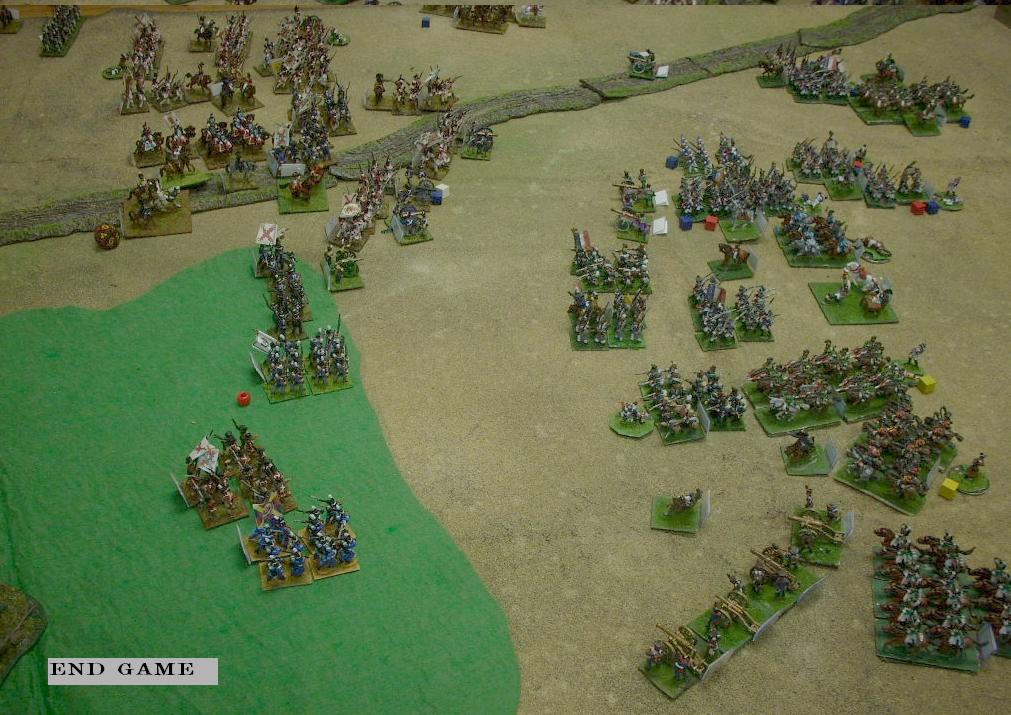
Count Castanos
Army Real
56,160 infantry, 3520 cavalry, 80 artillery
(22,560 are conscript infantry)
THE BATTLE OF MADRID
July 29th - 1809
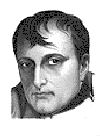
Emperor Napoleon
Armee de Pyrenees
27,360 infantry, 9280 cavalry, 56 artillery
|
Count Castanos |
THE BATTLE OF MADRID July 29th - 1809
|
27,360 infantry, 9280 cavalry, 56 artillery |
The background for this battle can be found in the history of Napoleon's march on Madrid. In summary, Napoleon has split the Spanish army away from the British and has pushed rapidly for Madrid with a single strong corps under Marmont. Castanos, retreating with his battered army from Segovia, makes a determined stand before Madrid with hastily raised conscripts trying to fill his depleted ranks. The battlefield that Castanos selects is intended to minimize the French advantages in cavalry and artillery but also, the hope is to force the French to push down a flank. When the French can attack all along the front, they tend to triumph all along the front.
Quixano, with the right wing, has predominantly militia and they are deployed in the parkland northwest of Madrid. Palafox, with the Madrid defence legion, spreads out his artillery and prepares to make his stand. On the left, Romana knows that he will take the brunt of the French weight but everyone was surprsied to see how much of a mass it would be.

The initial, half-hearted hope, is that the Spanish will be bale to keep the road to Torrijos open but the French right advances with startling speed to close it.

The Spanish enjoy an initial artillery superiority and the French left takes the initial casualties. Castanos orders his right wing, under Quixano, to prepare to advance out of the wood to actively angage the French left. The fear is that sitting too passively will allow the French right to roll up the Spanish left one brigade at a time.

The French right begins to roll up the Spanish left, one brigade at a time. The First Hussars, switching from left to right, make a dramatic charge that routs two brigades but but will ruin the hussars for the remainder of the day.

Spanish militia undertake a counter-attack, supported by cavalry but only limited success is gained. The French can be stalled but they cannot be stopped.
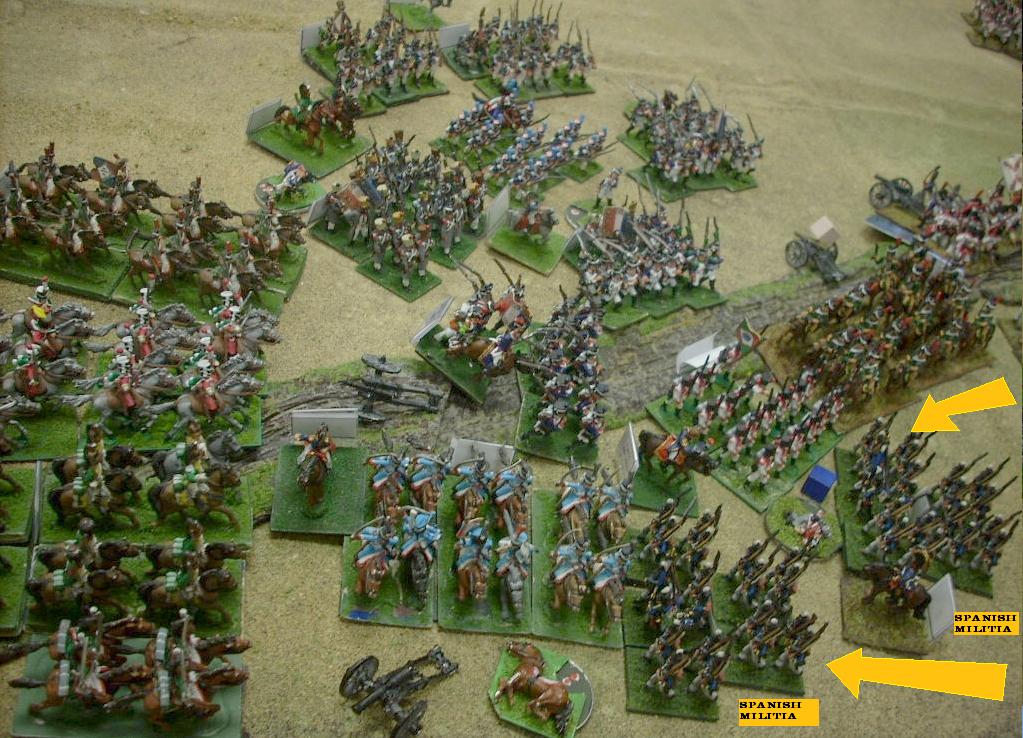
The Red division is left improperly commanded and vulnerable, spread all across the battlefield. Napoleon is obliged to ride forward to take personal command of the division and will rally the 1me Hussars by pinching a few cheeks and awarding some medals for the fine charge.

The French right advances as a juggernaut. Spanish units are routed, rallied, and sent forward to form new lines but the progress seems inevitable. There would be a heroic stand by stalwart Spanish grenadiers that would repulse three French charges throughout the day, including a cavalry charge that they would withstand in line.

French reinforcements arrive to bolster the left and though Quixano would poke his head out of the forest briefly, the arrival of Marmont's artillery would send them scampering back quickly for the cover of the trees. This appears to be a crisis point for the Spanish as their left flank struggles to patch together another rallied bigade or two to stand before the French. The Spanish fight like lions though and they do not quit.
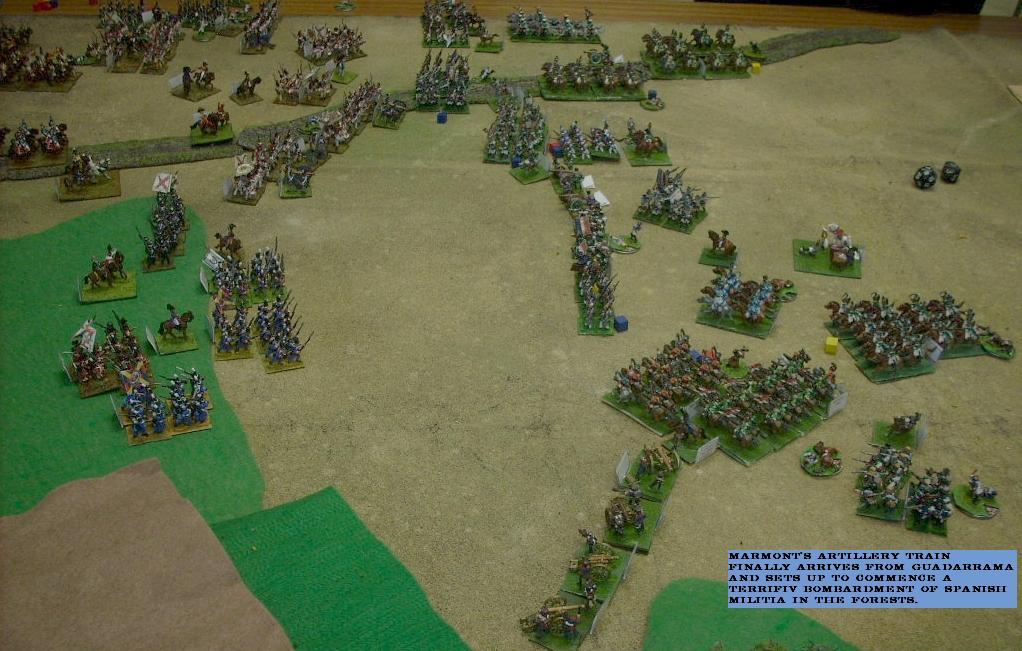
In a half hour period, five French brigades are routed back by determined Spanish defenders. The French cavalry is caught disordered and unable to respond to Spanish counter-attacks. Suddenly the whole battle seems reversed and the French center is naught but a mass of men scrambling to save themselves. The Spanish though are exhausted and disarrayed and are unable to advance to take advantage of the moment. In particular, the militia brigades appear absolutely incapable of moving forward at a timely rate.

A unit of Segovian lancers manages a terrific charge on exhausted horses. The cavalry would manage to disperse a French brigade but then would be forced to halt, a spent force.
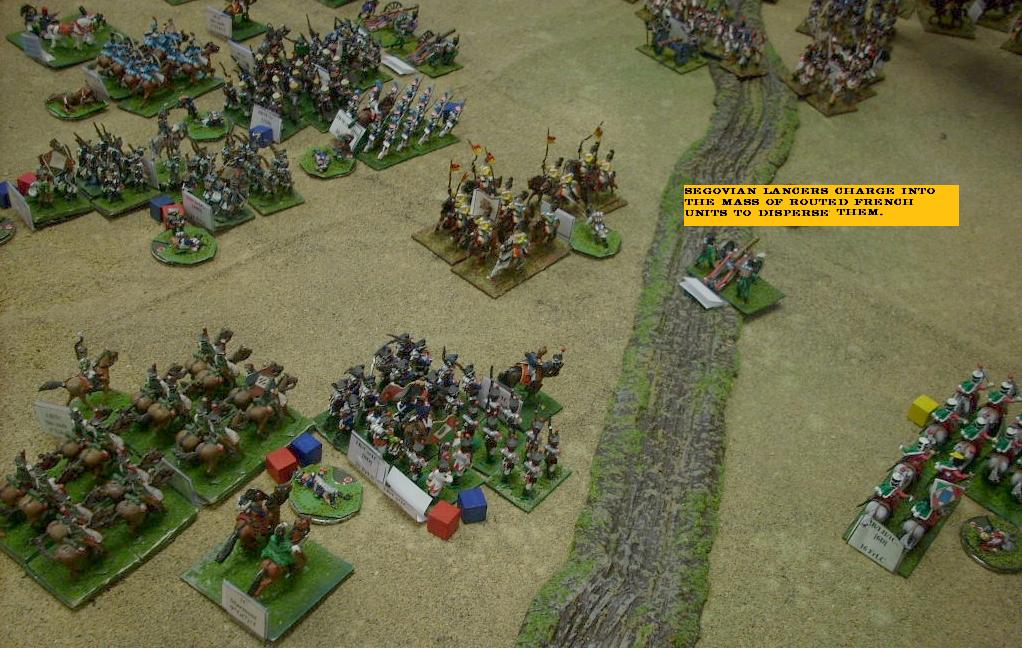
As the battle draws to close, Napoleon's army is rallying and beginning to advance once more. It is clear to Castanos that he is incapable of winning a battle of attrition against the French. They return as strong as before and though, through a miracle, the last French assault was broken, there is not enough strength left in the Spanish army to perform that miracle again. Indeed, even if they did beat back another French attack, the Spanish could not follow up to take advantage of it. This army is incapable of dealing a decisive blow.
Castanos, reluctantly, orders a retreat from Madrid. They will take the roads to Toledo and Terancon, where 20,000 more Spanish are gathered. It is the remainder of Quixano's Right Wing that was unable to reach the battlefield. Those three divisions would have made all the difference.
The Spanish army will, over the next weeks, need to be rebuilt and when it is, it will need to have more cavalry and less militia. Somehow, the Spanish will need to find a mass de decision.
Madrid is lost but the war of defiance will continue.
